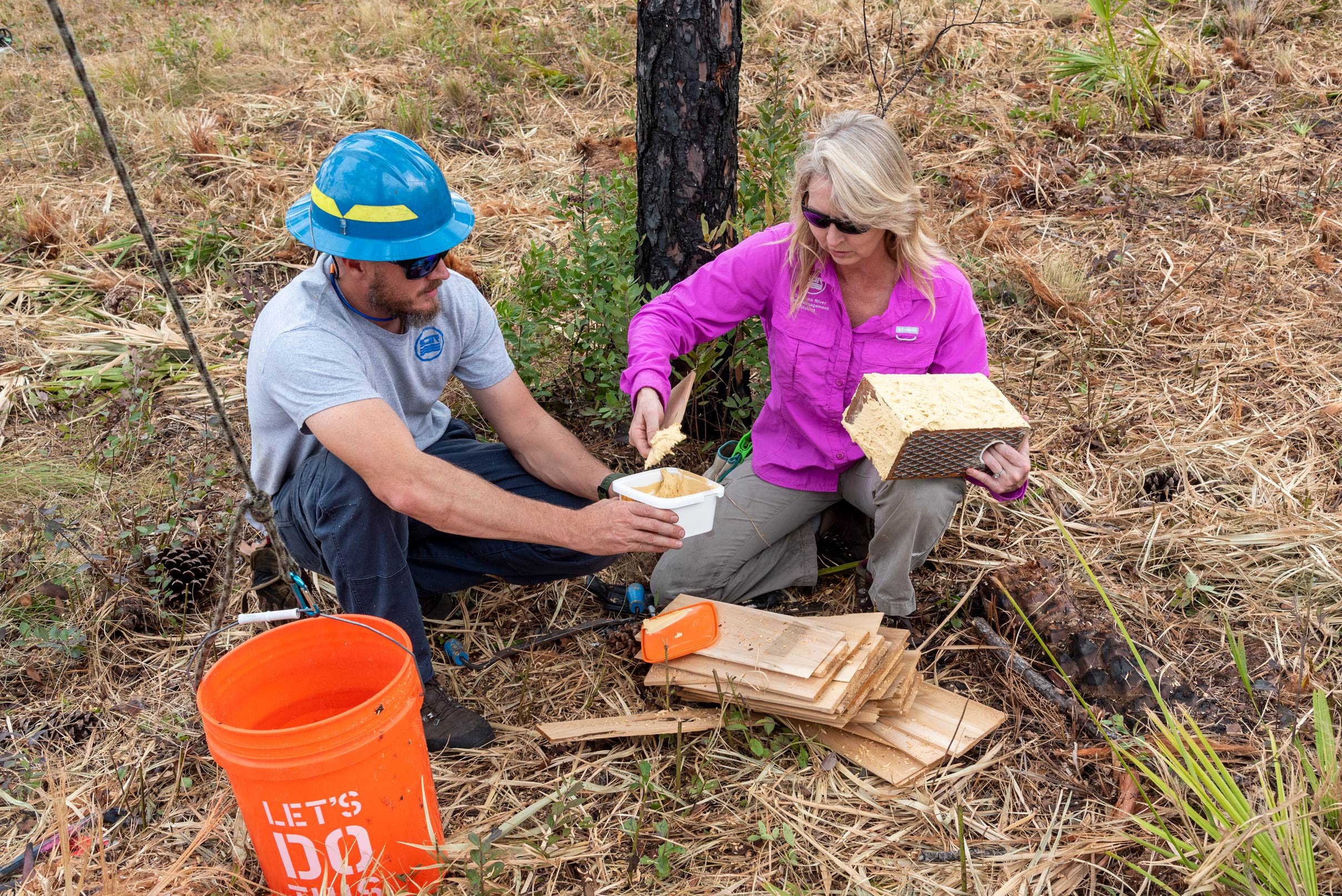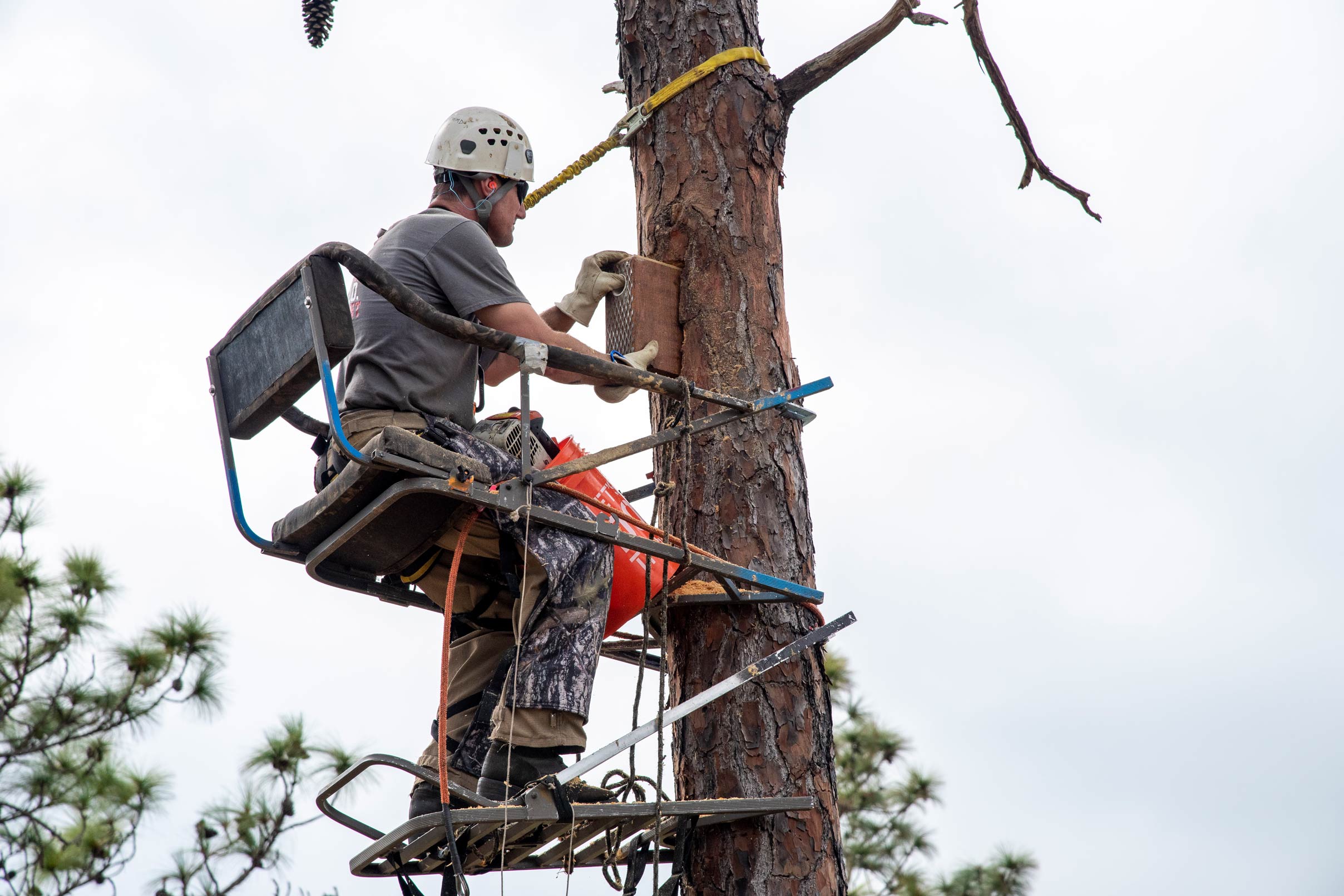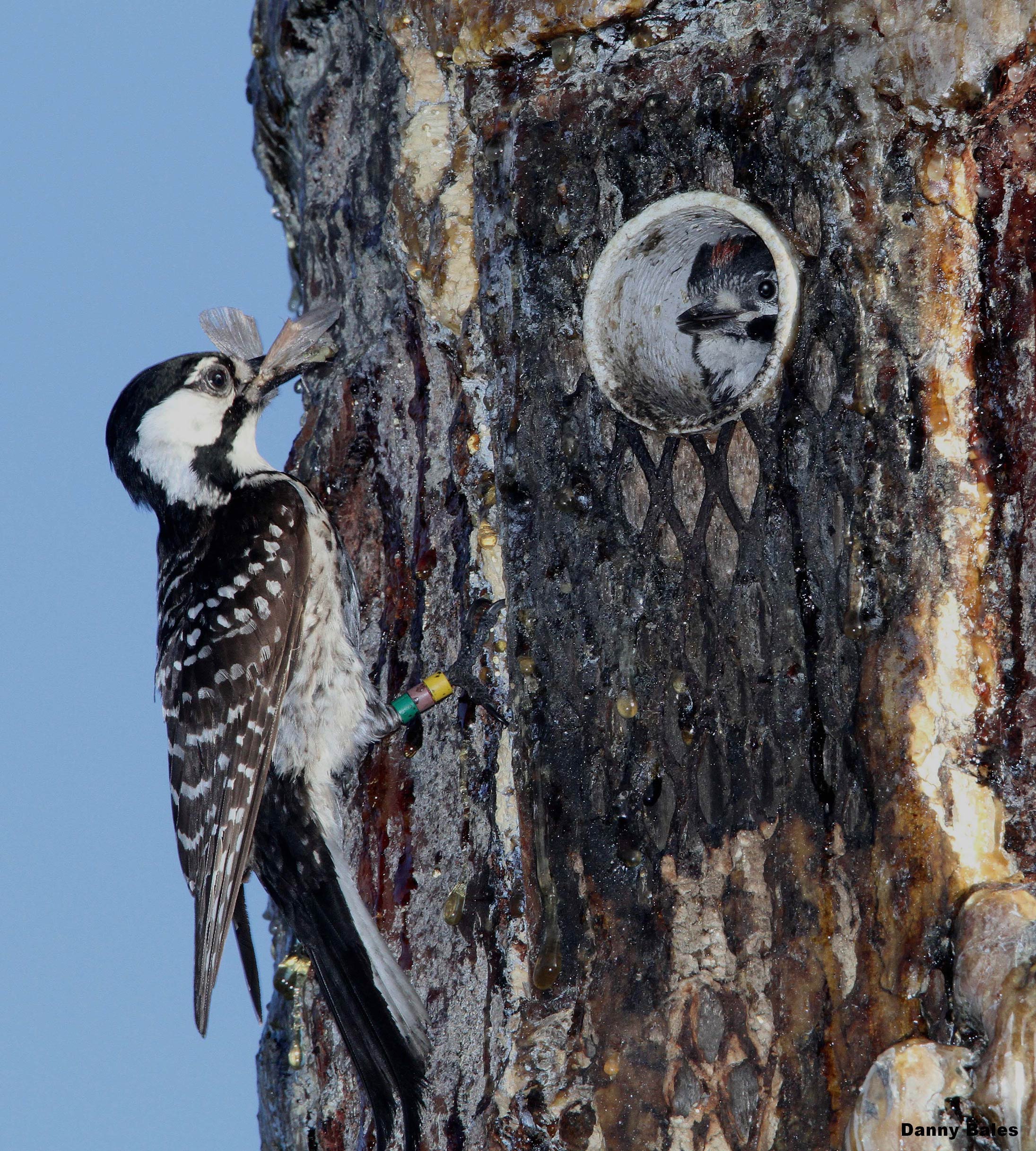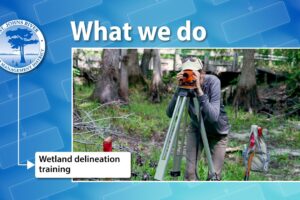Using ingenuity to create new homes for endangered woodpeckers
Call it a barn-raising on a much smaller scale.
St. Johns River Water Management District land managers recently gathered at the District’s Hal Scott Regional Preserve and Park in Orange County for a hands-on tutorial on the art of installing red-cockaded woodpecker cavities in pine trees.
The District manages the longleaf pine forests at Hal Scott that sustain the federally endangered woodpeckers. Red-cockaded woodpeckers are the only woodpecker in Florida that live exclusively in cavities they drill into live pine trees. The birds require mature pines, especially longleaf pines, that have developed a heart-rot that helps to soften the inner wood of the tree.
Since older, rotted pines are scarce at Hal Scott, District land managers install artificial cavities into the trees, creating natural-looking homes for the burgeoning red-cockaded woodpecker population. And that’s where District Land Manager and wildlife biologist Maria Zondervan takes charge.
Zondervan led a training course for her fellow land managers at Hal Scott, sharing her arcane knowledge of what constitutes attractive lodgings for these rare birds.
“Red-cockaded woodpeckers prefer trees that are a minimum of 70 to 80 years old, but this is a relatively young forest,” Zondervan says. “For now, the birds rely, in part, on government housing.”
The birds can spend months or even years drilling through the hard outer wood of a mature longleaf pine to hollow out a cavity. The method Zondervan teaches allows land managers to accomplish the task in about two hours, using a chainsaw and ingenuity.
Land managers select a pine tree measuring about 14 inches in circumference at chest height, scale the tree using specialized safety equipment and scrape off the bark in the spot where the cavity will be installed. A small chainsaw is used to carve a rectangular opening, usually located between 14 and 26 feet overhead. Natural cavities are constructed as high and inconvenient as possible to help thwart predators like rat snakes. The woodpeckers also drill resin wells around their cavities to cause sap to flow onto the face of the tree, another strategy for discouraging predators.
“We orient the opening west to southwest, but we also go by the lean of the tree because we don’t want rain to get into the cavity,” Zondervan adds.
Once the hole is cut into the tree, land managers slide a specially made wooden box into the opening and fill in gaps between the box and the opening with wood filler. A shot of brown spray paint visually blends the new cavity into the tree.
Fortunately, the new woodpecker cavities will be in demand. In 2020, all the red-cockaded woodpecker families at Hal Scott nested, with one family producing the first recorded three-chick nest.
Hal Scott is among 42 properties the District owns and manages throughout its 18-county jurisdiction as part of its work to protect and preserve water resources. In some cases, the properties protect water bodies and wetlands; in others, the land serves as a critical area for recharging Florida’s aquifer, the source of most of the drinking water supply in the District. Virtually all District property, including Hall Scott, is open to the public for activities that are compatible with conservation. Now is a great time of year to visit and possibly catch a glimpse of these rare birds.








